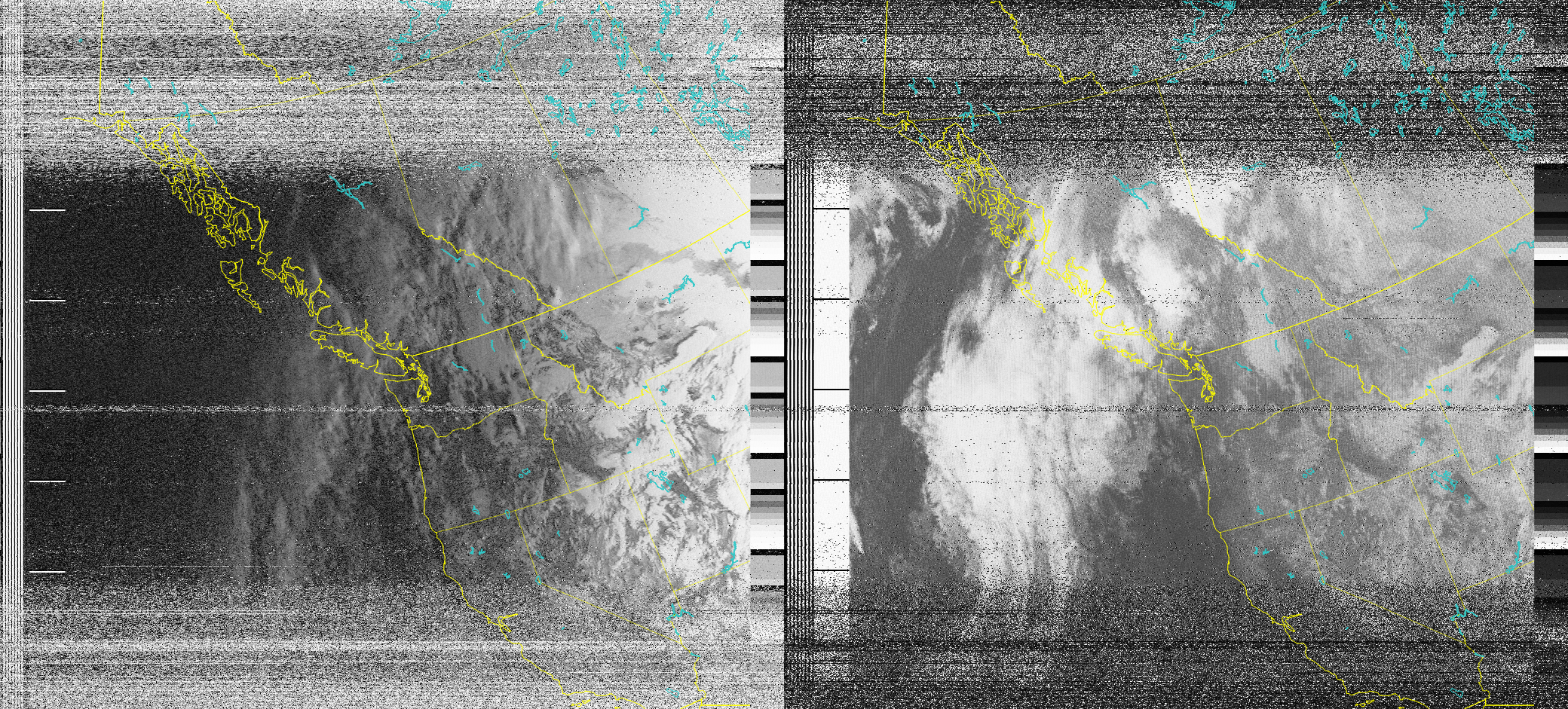What sample rate are you running here? There isn’t much of the spectrum visible. it could be a powerful nearby signal overloading the SDR, but you need to see more spectrum to see it. I know there is a very strong testing pager near me that often causes this same dip on the RTL
After some more toying around and reading, I think you’re right. There’s a periodic strong pager signal at 152Mhz that must be bleeding into my 148Mhz signal range a bit. I’ve already got a SAW filter that’s cutting it down substantially, so I don’t think it has much impact on the actual data.
Now to work on decoding that pager signal…
hmm, 152MHz seems quite a long way out from 137MHz to cause issues, but if it’s very strong I guess that could the issue.
Yeah, the only reason I’m leaning towards it is because the typical periodicity and duration seems to match with my dropouts. I might try running an experiment with two SDRs tuned to the different frequencies to see if they line up.
Yeah, I was going to suggest that if you had a second SDR
137MHz is also quite close to the airband, sometimes nearby aircraft can cause overload
Oh that’s very interesting. We live right next to an airport! Planes flying around all the time.
I’ll have to take a look at that.
yeah, that might do it
Input rate of 3200000 with a decimation of 64 giving me 50ksps. The signal in this case is a NOAA satellite APT which is weak because I found out my antenna wasn’t tuned correctly. I got a much stronger image today, but I still got a few dips like before. Qualitatively, they made the signal sound noisier, but they don’t seem to correspond to any bad sections of the resulting image. Maybe the signal was strong enough to overcome.
Can you give more details about pager signals? I’ve heard that term before, but I don’t know what it means.
Also, thanks for responding! the SDR community is pretty small, so I appreciate you taking the time.
btw, unless you have a very specific USB controller, anything above 2.4MHz sample rate will drop samples and ruin the APT image.
I guess you already figured the pagers out the from the other comment, but you can find details on sigid wikiI’ve gotten two APT images come in clear so far with that sample rate. Here’s this morning.

Do you know what an image ruined by lost samples would look like?
Those look fine to me, maybe your USB controller is OK? Also might just not be visible. It is more apparent with digital signals like LRPT than APT. I would recommend switching to 2.4MHz sample rate though, nothing in the 137MHz band needs that much bandwidth, and the SNR gain of decimating from 3.2MHz won’t make a difference in that band either.
I’ve not tried using a high samplerate with APT, but here is one with sample drops for a different reason:

They are the little mismatched lines in the middle, they are more obvious when you disable syncing:

It’s a USB3 port and I think the only peripheral on the bus, so I guess I’m lucky. Thanks for the examples. I’ll keep an eye out for those.
As far as your point about the SNR is that because oversampling only reduces read noise, but can’t actually reduce the noise present in the air? (Been a ham for 9 years, but still new to SDR)
The USB3 won’t make a difference. It’s actually a hardware issue with the rtl2832u in the SDR that causes the drop. I’m not sure why one controller is OK, but that’s what I’ve heard.
I’ll be honest that I don’t really understand why oversampling helps. But as far as I know it only increases the dynamic range, and if you don’t have a large difference between the weakest and strongest signals you are receiving there isn’t any benefit. And also, yeah, the environmental noise is probably way higher that the ADC noise.
If you’ve been a ham for 9 years, you probably know more about this than me. I’ve been into radio/SDR for about 1.5 years now, and I’ve mostly just done satellite stuff in that time.


